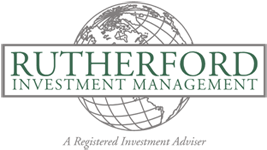Published December 10, 2021

With the S&P 500 up 23.2 percent year to date through Nov. 30, the U.S. equity market hit a speed bump. At the end of November, the market dropped sharply, as fears about a new strain of the virus appeared. Although the market recovered in ensuing days, Federal Reserve Chairman Jerome Powell mentioned accelerated credit tightening and increased rates, just to put an exclamation point on the drop.
A new strain of virus is especially worrisome to the market because COVID has already demonstrated the damage it can do to the economy. Rising interest rates are negative for the market as well. It is often said that the job of the Fed is to take the punch bowl away at the end of the party. It is also said that bull markets don’t die of old age (ours is 11 years old), but that they are murdered in their bed by the Fed.
The Fed has been talking more about interest rate increases. Board members have removed “transitory” as a modifier for inflation. Increased virus activity could mean fewer workers and more friction in the supply system, resulting in more inflation. The Fed has pledged to give ample advanced warning for any rate increase. Fed futures are showing summer as a likely date for increased interest rates, so any rate increase signals should come soon.
The CPI reflected more inflation in November. The job market is tightening. The Department of Labor reported a 4.2 percent unemployment rate in November. Full employment is usually considered to be between 4 percent and 6 percent unemployment in the U.S. The economy appears to be firming, so do we really need accommodative rates? The trend is definitely toward more tightening and higher rates.
What should an investor do? Investors should have a long-term point of view. Reacting to short-term news can cause trouble for investment of one’s savings over a lifetime. A long-term perspective provides the opportunity to let time work in the investor’s favor. The broad U.S. economy has demonstrated resilience over and over again, especially against specific individual asset classes. “The trend is your friend” is never more appropriate than in times like these. The long-term trend of the U.S. economy is upward.
Being invested in the right sectors of the economy is also important. We favor technology for its diversity and growth through good times and bad. Health care is another favorite of ours, as it is both defensive and growing due to the aging population. Financials should perform well in an economy with rising interest rates.
Diversification is key to mitigating risk. Even within sectors, an investor can be diversified. For instance, both technology and health care have many quality companies providing broad diversification within their sectors.
These simple methods can help investors in all markets. But continue to expect a wild ride.
William Rutherford is the founder and portfolio manager of Portland-based Rutherford Investment Management. Contact him at 888-755-6546 or wrutherford@rutherfordinvestment.com. Information herein is from sources believed to be reliable, but accuracy and completeness cannot be guaranteed. Investment involves risk and may result in losses.
The opinions, beliefs and viewpoints expressed in the preceding commentary are those of the author and do not necessarily reflect the opinions, beliefs and viewpoints of the Daily Journal of Commerce or its editors. Neither the author nor the DJC guarantees the accuracy or completeness of any information published herein.
